How Can I Tell if a Rash on My Toddler Is Serious?
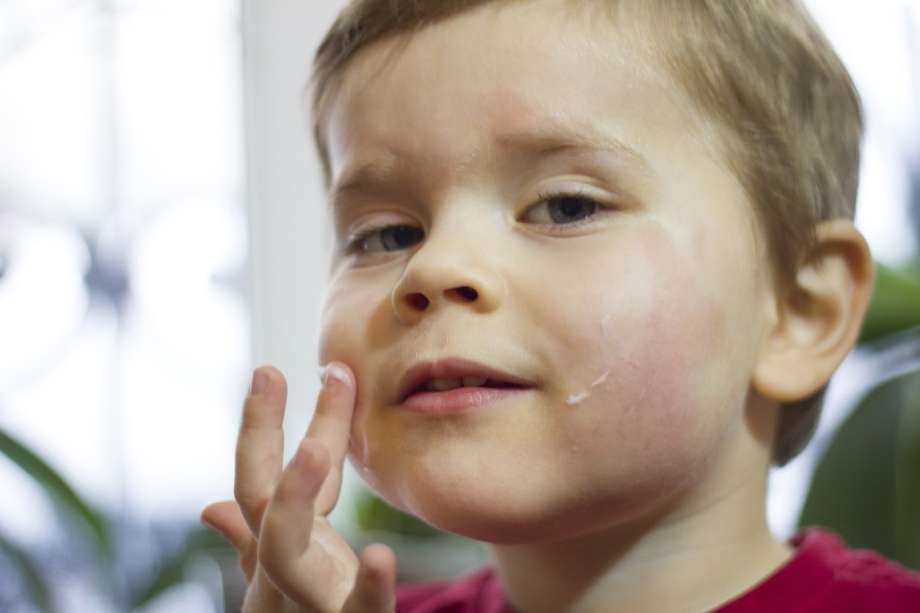
Rashes have different appearances depending on their cause. It can sometimes be hard to detect one type of rash from another, which can make it hard to gauge how serious the rash is. If you know the exact symptoms and signs associated with common types of rashes, it’ll make the type easier to detect and you’ll be better able to help your toddler.
It is typical for a rash to travel to other parts of the body before going away. Generally, a rash can last between a couple of days to weeks. Although rashes can cause discomfort and itchiness, most of them aren’t too much of a concern and are easy to treat.
What Can a Rash Look Like?
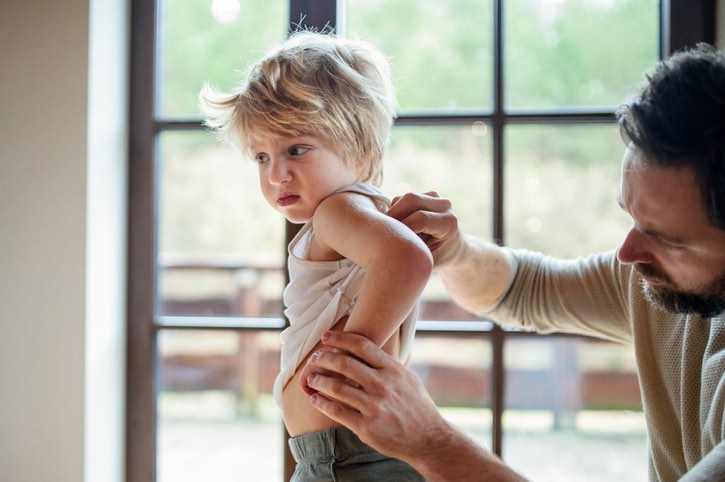
Different rashes have different appearances. Some of the common signs and symptoms include:
- Red or discolored flat skin
- Itchiness
- Raised bumps
- Red or discolored bumps
- Blisters
- Raised, red welts
- Red or discolored blotches
Common Skin Rashes on Toddlers
Here are some common types of rashes toddlers can get:
1. Heat Rash
Heat rash occurs when the weather is hot and humid and the sweat glands get clogged. If you see small, red or pink pimples on your toddler’s head, neck or shoulders, this could be a heat rash. It is also called ‘Prickly Heat’ because of the skin’s appearance.
In order to avoid heat rash, make sure your toddler wears a sunhat and sunscreen when playing outdoors, drinks plenty of water, and doesn’t play outside for prolonged periods of time in the heat.
2. Eczema
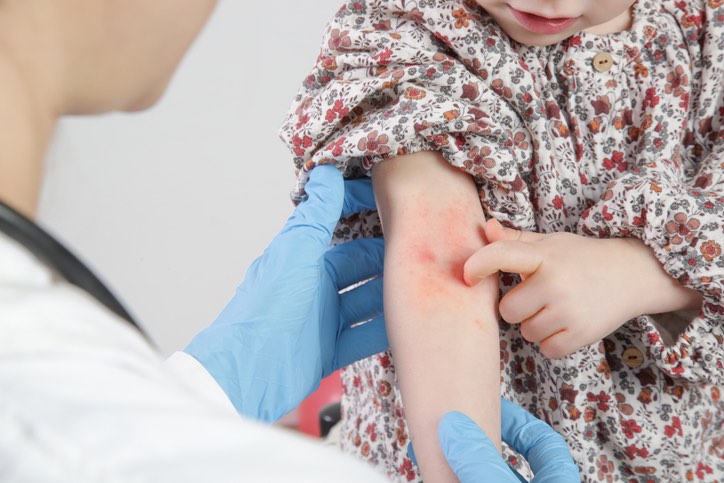
If your toddler has dry, red skin with severe itchiness, they may have a skin condition called eczema. The most common is called Atopic Dermatitis. Eczema is not life-threatening but it can be frustrating for the child and parents due to the intense itching. Be sure to work with your pediatrician or healthcare professional to determine a treatment plan that includes a skin care routine to help manage your child’s symptoms.
3. Contact Dermatitis
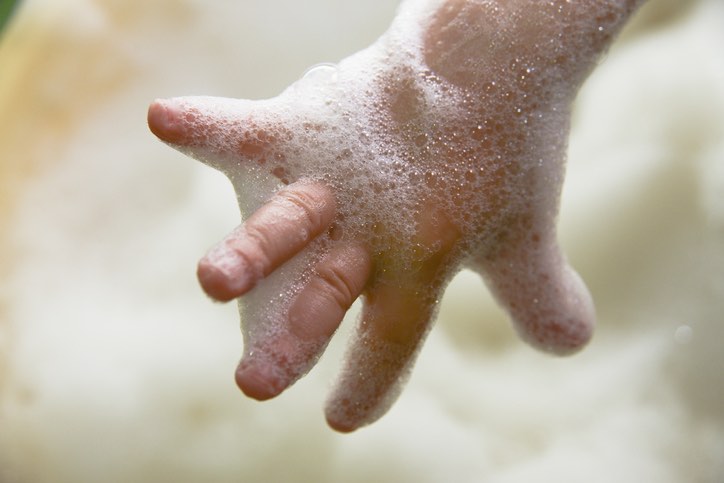
Contact dermatitis occurs when your child touches certain things that can cause a rash or allergic reaction. Some common causes include trigger foods, detergents, plants such as poison ivy and poison oak, and soaps. The skin starts to swell, turns red, and there may be some large blisters. Symptoms can be treated with a mild corticosteroid cream such as hydrocortisone. It typically lasts a week or two.
4. Hives
Hives look like raised pink bumps with an itchy rash. Hives may also cause welts to appear anywhere on the body and can last minutes or days. Many things can cause hives including viral infection, bacterial infection, allergic reactions to food, drug reactions, bee stings, insect bites, heat, cold, strep throat, plants, pollen, pet saliva and other irritants. 30% of hives have an unknown cause.
Most hives aren’t a cause for concern and over-the-counter antihistamines can help reduce symptoms.
However, if your toddler’s face is swollen or has trouble breathing, seek medical attention immediately. They may be at risk of anaphylaxis which is a potentially life-threatening severe allergic reaction that causes blood pressure to drop significantly, and airways to close and prevent breathing.
5. Psoriasis

Psoriasis is a chronic condition that causes itchy skin with thick white scaly patches, often located on the scalp, elbows, knees, and around the belly button. Psoriasis is more common among girls than boys, and flare-ups can be triggered during times of high emotional or mental stress. See your pediatrician if you think your toddler has psoriasis. You may be referred to a dermatologist to determine a medical treatment plan.
6. Chickenpox
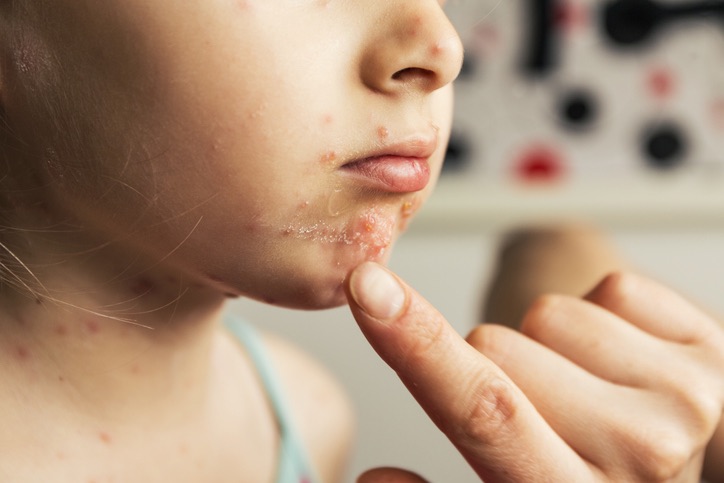
If your toddler has a rash, red spots or blisters all over their body and a fever, they may have Chickenpox. The difference between a rash and chickenpox is that the blisters go through stages as the disease progresses. Over time, the blisters will pop, dry out and turn into crusty sores. Try to prevent your child from scratching their sores as it can spread germs and cause a skin infection.
Chickenpox (Varicella) is a virus that can spread easily between children. It’s recommended that teens and adults who are unvaccinated or have never had the disease get the vaccine. It’s also important that a pregnant woman does not come into contact with someone with chickenpox if they have not been vaccinated or are not immune.
7. Shingles
Shingles is a skin condition caused by the varicella-zoster virus. Children rarely get shingles. Most cases occur among adults over 50 years of age. The rash is painful with tingling and or itching. It begins as a cluster of small pimples on the face or body. Then the pimples become blisters that open up and crust up. Some children with shingles get a fever, a headache and feel tired and achy. It’s important to call your doctor and seek medical advice if you suspect your toddler has shingles.
What To Do If You Think The Rash Is Serious
If the rash is due to a viral infection, it can cause your child to have a fever. Normally, the rash appears after the fever. However, if the fever occurs at the same time as your child’s rash, see your doctor.
Measles is caused by a virus that spreads very easily and quickly through coughing and sneezing; it can cause serious medical issues in children. The most common symptom of measles is a red or brownish blotchy rash. Due to the availability of the measles vaccine in 1963, there are very few cases of it in the US. However, across the world, it is not completely eliminated. If you suspect your child has measles, contact your pediatrician right away.
Seek immediate medical attention if your child’s rash looks like small, red or purple dots that do not lighten in color when you apply pressure on them, along with a fever, headache, or back or neck pain. This could be a sign of a meningococcal infection. Call your doctor immediately and tell the medical care team about your concerns. Try to arrange for a home visit to minimize the spread of the infection.
Lastly, if your child has any of the following signs, contact 911 or your local emergency health services immediately or take your child to the emergency room:
- Difficulty breathing
- Trouble swallowing
- Not moving or unable to stand up
Always contact your child’s pediatrician to make an in person appointment if you are concerned about a skin rash on your toddler or aren’t sure what it is.
Did you find this article useful? Read about dermatitis in young children.

